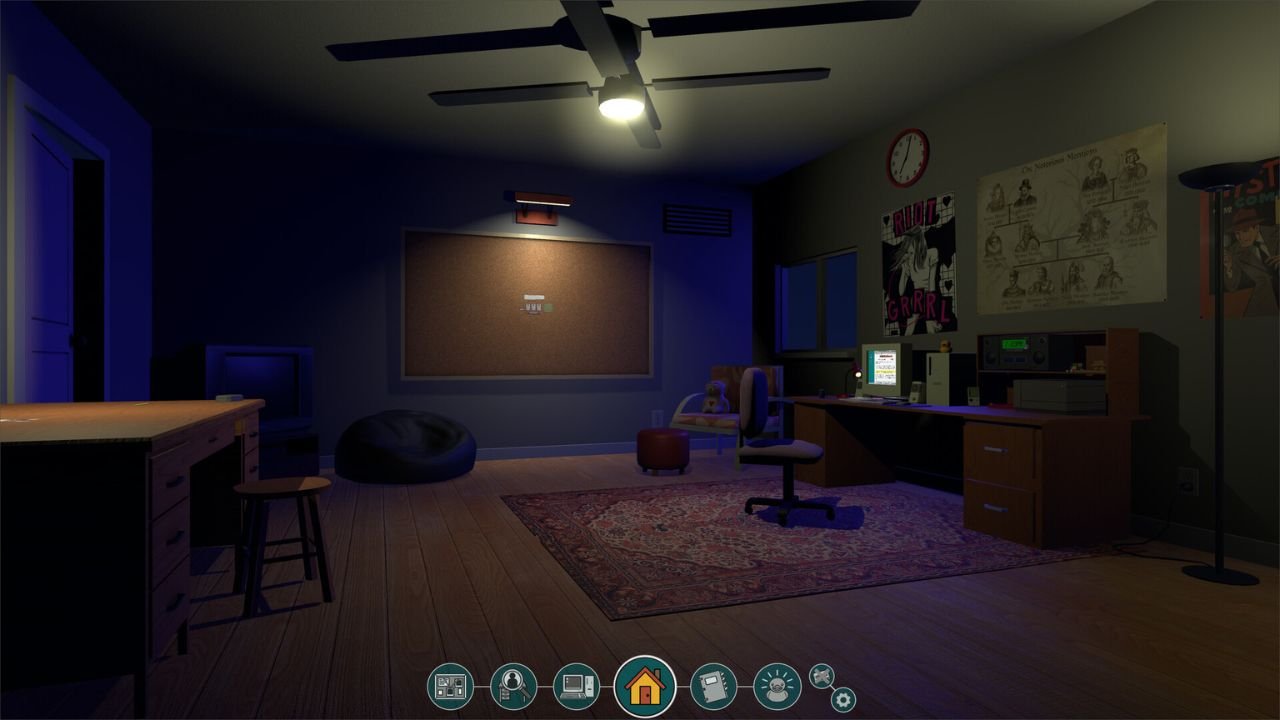The Roottrees Are Dead: A Thrilling Mystery Puzzle Game

The Roottrees Are Dead” is an investigative puzzle game that has captivated mystery enthusiasts and puzzle solvers alike. Developed by Jeremy Johnston and Robin Ward, the game delivers a unique storytelling experience through a simulated late-1990s computer interface. Players assume the role of an investigator unraveling the secrets of the Roottree family lineage following a tragic accident. With its innovative gameplay, intricate narrative, and immersive mechanics, “The Roottrees Are Dead” stands out as one of the most compelling puzzle games of its kind.

For this all-around analysis, I would like to look at the game from all the possible angles such as its story, gameplay, narrative construction, the audience’s response, and the features that are one-of-a-kind and make the game very attractive for the fans of the genre.
The Premise: Unraveling the Roottree Family Mystery
Set in 1998, the author of “The Roottrees Are Dead” commences the novel with a dreadful happening: The Roottree family, Carl Roottree, his wife, and their three daughters are killed in a plane crash. The Roottree household, known to be the proud owners of the famous Roottree Candy Company, is fraught with a tangle of secrets, unsuspecting heirs, and unremembered connections.
You are a PI and you must find out who gets the Roottree fortune. You need to dig deep into their family history. Use the game’s digital tools to trace the family line. There are twists to this story, so be careful to tell what is true and what is not. It is a complicated puzzle which you must solve for yourself. Get going!
Gameplay Mechanics: A Digital Detective’s Toolkit
The game’s primary mechanics revolve around research, deduction, and data synthesis. Instead of traditional point-and-click mechanics, “The Roottrees Are Dead” immerses players in a simulated late-90s internet browsing experience. Players gain access to various digital resources, including:
Online Archives: Searchable newspaper clippings and digital journals help reconstruct the Roottree family’s history.
Personal Correspondence: Old emails and letters between family members provide insights into relationships, conflicts, and hidden affairs.
Government Records: Birth certificates, death records, and legal documents serve as critical puzzle pieces.
Photographs and Family Trees: Visual references and genealogical charts guide the investigation, helping players confirm familial connections.
To progress, players must carefully analyze data, cross-reference details, and piece together a coherent family tree. The game rewards meticulous attention to detail, as missing even a single connection can lead to a dead end.
Narrative Structure: A Mystery in Two Parts
The story unfolds in two main segments:
1. The Main Investigation
In the primary phase of the game, players gather and organize evidence to construct an accurate Roottree family lineage. The game slowly reveals the family’s complex past, exposing affairs, betrayals, business rivalries, and financial disputes. The deeper you dig, the more unsettling the secrets become, culminating in a shocking revelation about the true heirs.
2. Roottreemania: The Aftermath

When they successfully deal with the mystery, players reach the stage of “Roottreemania,” which is another chapter based on the effect of the situation at the end. This part shows some new characters, looks over unsolved riddles, and confronts players with a new series of puzzles. It provides an extended look into the consequences of the initial investigation, giving players a chance to explore deeper layers of the Roottree family’s legacy.
The Game’s Unique Appeal
“The Roottrees Are Dead” is not just another mystery game; it stands apart due to several unique elements:
1. Realistic Digital Interface
Unlike traditional adventure games that rely on direct interactions with characters, “The Roottrees Are Dead” mimics a real-life digital research process. The in-game computer features a fully functional web browser, allowing players to search databases, highlight text, and annotate findings—an experience akin to real-world detective work.
2. Non-Linear Progression
The game does not follow a strict linear path. Instead, players can explore leads in multiple directions, making each playthrough feel unique. Some clues may lead to dead ends, while others unlock hidden connections, encouraging players to think critically and remain persistent in their investigation.
3. Authenticity and Historical Accuracy
The overview of the game is that the world-building has a high degree of modularity which, hence lending it the characteristic of being meticulously crafted, where everything in the game is notable and trackable. It comprises 1990s-style web pages that appear very credible, period-appropriate UI elements, and references to historical events. This level of accuracy when rendering the details of the game world helps the player get more immersed and achieves a higher degree of realism giving the game a rich life of its own.
4. Deeply Engaging Storytelling
While many puzzle games prioritize mechanics over narrative, “The Roottrees Are Dead” delivers a rich, intricate story that gradually unfolds through documents, messages, and historical records. The emotional depth of the Roottree family’s struggles and secrets makes the game feel like an interactive novel.
Critical Reception and Impact
Ever since its release, “The Roottrees Are Dead,” received a lot of praise for its authentic story, the engaged, and new gameplay design. The game is acknowledged by critics and players because they appreciate its spellbinding story and challenging puzzles. The best parts of reviews are as follows:
PC Gamer: “A masterclass in digital sleuthing, ‘The Roottrees Are Dead’ combines historical intrigue with detective work in an entirely new way.”
Adventure Game Hotspot: “A brilliant puzzle experience that rewards curiosity and keen observation. A must-play for fans of investigative storytelling.”
IndieGameReview: “One of the most immersive and innovative detective games in recent years. The attention to detail is simply astonishing.”
The game has become a hit among content creators and streamers who love deep investigations. The puzzles are open-ended, which allows for rich stories that spark discussion, speculations, and theories.
Final Verdict: Should You Play It?
“The Roottrees Are Dead” is a puzzle game that is all about mystery. If you like to solve puzzles that are based on family trees, detective work, or finding things out online, you will find this game enjoyable. The story, puzzles, and how the game plays are really good. It makes you think and figure out the mystery in a fun way.
“The Roottrees Are Dead” is a type of experience only a true lover of the riddles and the facts that are hidden would be able to get. With a perfect combination of history, research, and storytelling, it is a game that is a must for every detective game lover.



